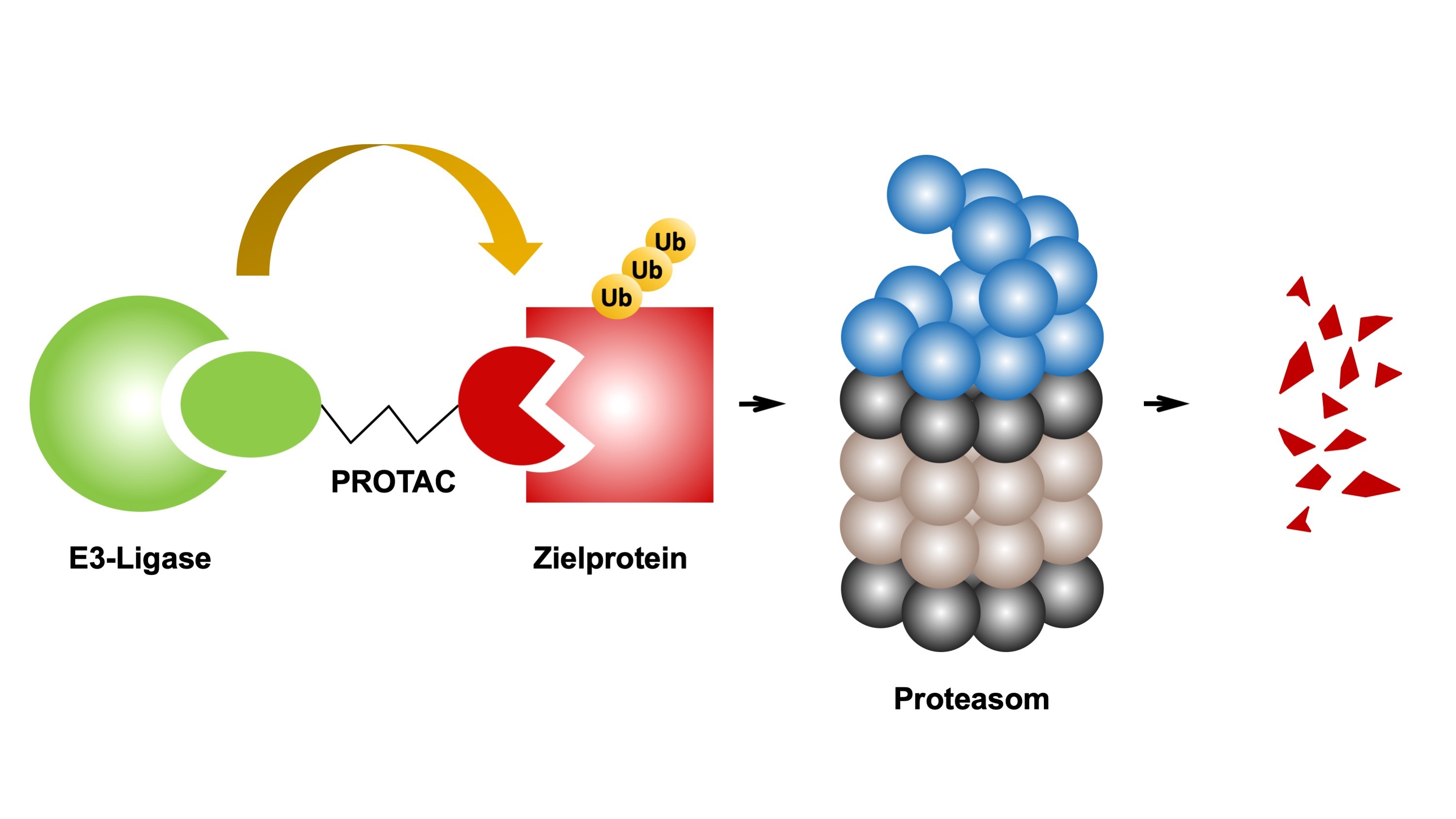Empowering the cell’s disposal system to deal with disease-prone garbage
PROXIDRUGS project included in concept phase of “Clusters4Future” programme – search for novel active components for therapeutic solutions.

FRANKFURT. PROXIDRUGS, the regional network with participation of the Branch of Translational Medicine and Pharmacology TMP of the Fraunhofer IME, the Goethe University and the Technical University Darmstadt, aims at developing active molecules for selective intervention, opening new therapeutic avenues. Within the “Clusters4Future” ideas competition, the Federal Ministry of Education and Research has now selected the project for funding in the concept phase – as one of 16 finalists out of 137 proposals submitted.
“This method allows us to tackle innovative, promising targets that were previously considered "undruggable" due to an unknown binding pocket binding pocket for a small drug molecule," explains Prof. Dr. Dr. Gerd Geisslinger, Managing Director of Fraunhofer IME. "The ideal combination of the excellent basic research at the Universities of Frankfurt and Darmstadt and the expertise of the Fraunhofer-Gesellschaft in applied research is the best prerequisite for the successful translation of this highly innovative approach into application for the benefit of the patient.”
The Federal Ministry of Education and Research will support the project with funds of up to €250,000 during the six-month concept phase starting in May. If the alliance then qualifies for the implementation phase, up to 5 million euros will be available per year for PROXIDRUGS. With this funding scheme, the Ministry wants to turn scientific hotspots into powerful regional innovation networks.
Proteins destined for degradation are usually marked in an enzymatic reaction with the small protein ubiquitin. The cell’s “shredder”, the proteasome, recognizes this signal and breaks the respective protein down into its individual components, which are then recycled. At the focus of PROXIDRUGS is a novel class of drugs acting through a proximity-based mechanism: The corresponding molecules exhibit two functional units – one for the selective binding of the respective target protein and a second one to dock onto the required enzyme. In this way, any unwanted protein that has a suitable binding pocket can in principle be marked with ubiquitin and flagged for degradation.
First molecules based on this principle, called PROTACs (Proteolysis Targeting Chimeric Molecules), already exist. A major advantage is their high specificity and catalytic mode of action – meaning that each molecule can carry out multiple reactions, such that only a small amount of active drug is needed. First trials with PROTACs in prostate and breast cancer are currently underway. The researchers in the PROXIDRUGS alliance now want to create new molecules in this very promising class of drugs, e.g. for diseases that until now cannot be treated with small molecules.
One of the aims of the PROXIDRUGS alliance of Goethe University, TU Darmstadt and the Fraunhofer IME is to bundle existing expertise in basic and clinical research, in pharmaceutical and biotech companies in the Rhine-Main region within one network.
 Fraunhofer Institute for Molecular Biology and Applied Ecology IME
Fraunhofer Institute for Molecular Biology and Applied Ecology IME